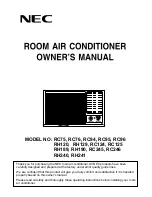
37
Gas furnaces can use:
CFM =
Output Capacity in BTUH*
SHC x temp rise
*Refer to furnace data plate for furnace output capacity. SHC = Sensible Heat
Constant (see table below), an air velocity meter or airflow hood can give a more
accurate reading of the system CFM. The measurement for temperature rise should
be performed at the indoor coil inlet and near the outlet, but out of direct line of sight
of the heater element or heat exchanger. For best results, measure air temperature
at multiple points and average the measurements to obtain coil inlet and outlet tem-
peratures.
15.0 EVACUATION AND LEAK TESTING
15.1 EVACUATION PROCEDURE
Evacuation is the most important part of the entire service procedure. The life and
efficiency of the equipment is dependent upon the thoroughness exercised by the
serviceman when evacuating air and moisture from the system.
Air or nitrogen in the system causes high condensing temperatures and pressure,
resulting in increased power input and non-verifiable performance.
Moisture chemically reacts with the refrigerant and oil to form corrosive hydrofluoric
acid. This attacks motor windings and parts, causing breakdown.
• After the system has been leak-checked and proven sealed, connect the vacuum
pump and evacuate system to 500 microns and hold 500 microns or less for at
least 15 minutes. The vacuum pump must be connected to both the high and low
sides of the system by connecting to the two pressure ports. Use the largest size
connections available since restrictive service connections may lead to false
readings because of pressure drop through the fittings.
Altitude
(feet)
SENSIBLE HEAT
CONSTANT
(SHC)
ALTITUDE
(FEET)
SENSIBLE HEAT
CONSTANT
(SHC)
Sea Level
1.08
6000
0.87
500
1.07
7000
0.84
1000
1.05
8000
0.81
2000
1.01
9000
0.78
3000
0.97
10000
0.75
4000
0.94
15000
0.61
5000
0.90
20000
0.50
















































